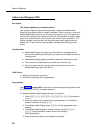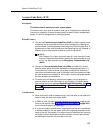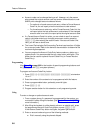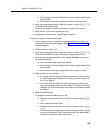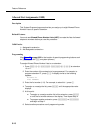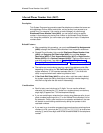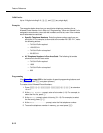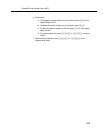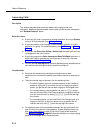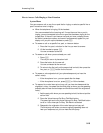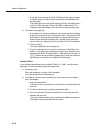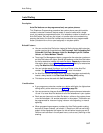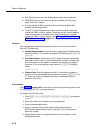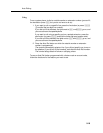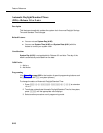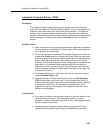
Feature Reference
5-14
Answering Calls
Description
This section describes how users can answer calls ringing at their own
extensions. Additional features enable users to pick up calls at other extensions—
see “Related Features” below.
Related Features
■ A user can join a call in progress at another extension, as long as Privacy
is not on for that extension (see Joining Calls).
■ A user can answer a call ringing at another specific extension or at any
extension in a group. For more information, see Call Pickup and Group
Pickup.
■ A user can use Direct Line Pickup—Active Line to answer calls on lines
not assigned to the user’s phone.
■ A user can program the Voice Interrupt on Busy Talk-Back feature on a
button with lights to respond to a voice interrupt on busy call. Also see
Voice Interrupt On Busy (#312).
■ You can use Call Waiting (#316) to specify standard phone extensions that
can receive a call-waiting tone and a second incoming call.
Considerations
■ Calls that are answered by pressing a pool button can be held,
conferenced, or transferred; however, pool buttons cannot be used to join
calls.
■ There are several ways to access a line for answering calls:
— On either a system phone or a standard phone, lift the handset to
answer a ringing call (if more than one call is ringing at a system
phone, you get the call that has been ringing for the longest time).
— On a system phone, press a specific line, pool, or
i button.
You can also use Direct Line Pickup to pick up a ringing or held call,
or to join an active call, by dialing
i 6 8 and the two-digit
line number.
— On a standard phone, you can use Direct Line Pickup to pick up a
ringing or held call, or to join an active call on a specific line: at
intercom dial tone, dial
6 8 and the two-digit line number.
■ For system phones and most standard phones, the user can identify the
type of call by the system’s ringing patterns. System display phones can
also show in the display the type of call that is ringing at the extension.
(See ‘‘Ringing Patterns’’ on page 3-6.) Note that there are no unique ringing
patterns for coverage calls or forwarded calls.



